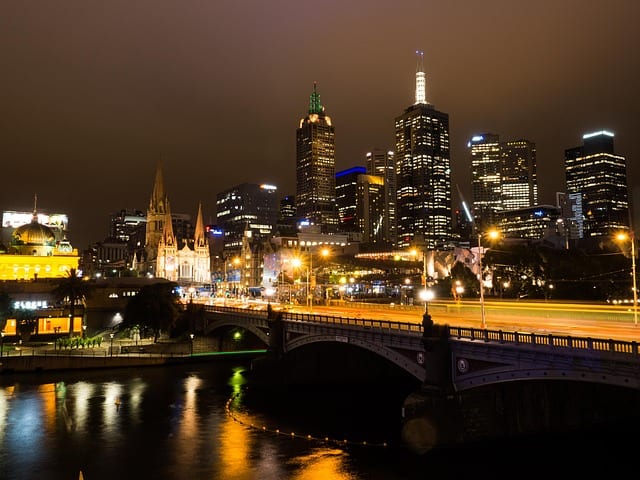Melbourne is both the capital and the largest city of the state of Victoria. The metropolis attracts countless visitors every year, because it has a very interesting history and a lot of varied sights. A special feature of the city is the distinctive music scene with its numerous daily live concerts that take place mainly in and around the city centre. Melbourne also offers a wide range of festivals and events. Some Australians or travellers prefer the capital of Victoria to the other big cities of the red continent, as there is something for every taste almost around the clock.
Facts worth knowing about Melbourne
Victoria has a population of just under 6.3 million, of whom 4.9 million live permanently in the Melbourne metropolitan area. Thus, the metropolis is the second largest city in Australia, whose residents are also called Melburnians. Melbourne is almost twice as large as Berlin in terms of area, occupies an area of 1,705 km² and has a population density of 1,600 people per km².
The fact that Melbourne is extremely multicultural is due to the past waves of immigration, the still high immigration rate and the many international students who are currently studying at the 8 universities. Almost exactly one third of the population speaks at home at least one other language besides English. Chinese is the second most spoken language, followed by Greek, Italian and Vietnamese.
Melbourne is nicknamed Garden City because there are several beautiful parks in the immediate vicinity of the city centre. The extensive theme of museums, culture & art, the many restaurants, the daily live concerts and the numerous sports facilities make the metropolis one of Australia’s most important cities in terms of culture and sport.
When it comes to shopping, there are huge shopping complexes available. The nightlife with its numerous pubs, bars and nightclubs is also worth a visit. So it’s no wonder that Melbourne has been voted the most liveable city in the world several times by the English magazine “The Economist”. However, the capricious weather is also characteristic. And if you live a good bit outside the city centre, you will also feel the extreme vastness of the Garden City as well as the connected routes. But in the individual suburbs, there are different means of public transport and the arrival/departure is quite uncomplicated thanks to several direct connections.

Picture gallery: Great impressions of all highlights
Basically, the Yarra River flowing through the city center from west to east is ideal for orientation. For example, the Central Business District (CBD) nestles against the north bank of the river that flows into Port Phillip Bay. The city centre is roughly separated from the Yarra River in the south, Spencer Street in the west, Queen Victoria Market in the north and Spring Street in the east. The chessboard-like road network of the so-called Hoddle Grid with its historic alleys and arcades (Lanes & Arcades) is located directly in the CBD.
In the middle of the grid is the car-free Bourke Street Mall and to the west is Chinatown at the eastern end of Little Bourke Street. In the north you reach the Melbourne Central Shopping Centre with the underground train station. Only a few hundred metres further is the Queen Victoria Market, which is really worth seeing. But the probably most popular meeting point of the city is the Federation Square at the Flinders Street Station, south of the Hoddle Grid, where there is a big tourist information, restaurants and cafés.
Throughout the city centre you will find cultural institutions such as museums, art galleries and exhibition centres as well as numerous historic buildings. In addition, the old, stylish trams commute back and forth amidst the tree-lined avenues. A typical feature of the city centre, however, is the aesthetic contradiction between the graceful historic buildings and the shiny window facades of the modern office towers.
To the south and east, the CBD is bordered by a number of green areas, some of which adjoin the Yarra River. Between Federation Square and the river lies Birrarung Marr Park and Melbourne & Olympic Park. In the south of the Yarra River, on the other hand, the large Kings Domain with the Royal Botanic Gardens, great viewing platforms, a tourist information, museums and lots of monuments was created.
The districts of Docklands and Southbank are not officially part of the CBD, but they are directly connected to it. The CBD is home to important company headquarters, large office buildings, important facilities and international institutions. As Melbourne has no restrictions on building heights, it is home to 5 of Australia’s 6 tallest buildings. The largest high-rise building in the CBD is the Rialto Towers (251m) on Collins Street, the 55th floor of which has a great viewing platform. But with a height of 297.3m, the Eureka Tower in Southbank is the highest building in the city. The viewpoint was built here on the 88th floor.


